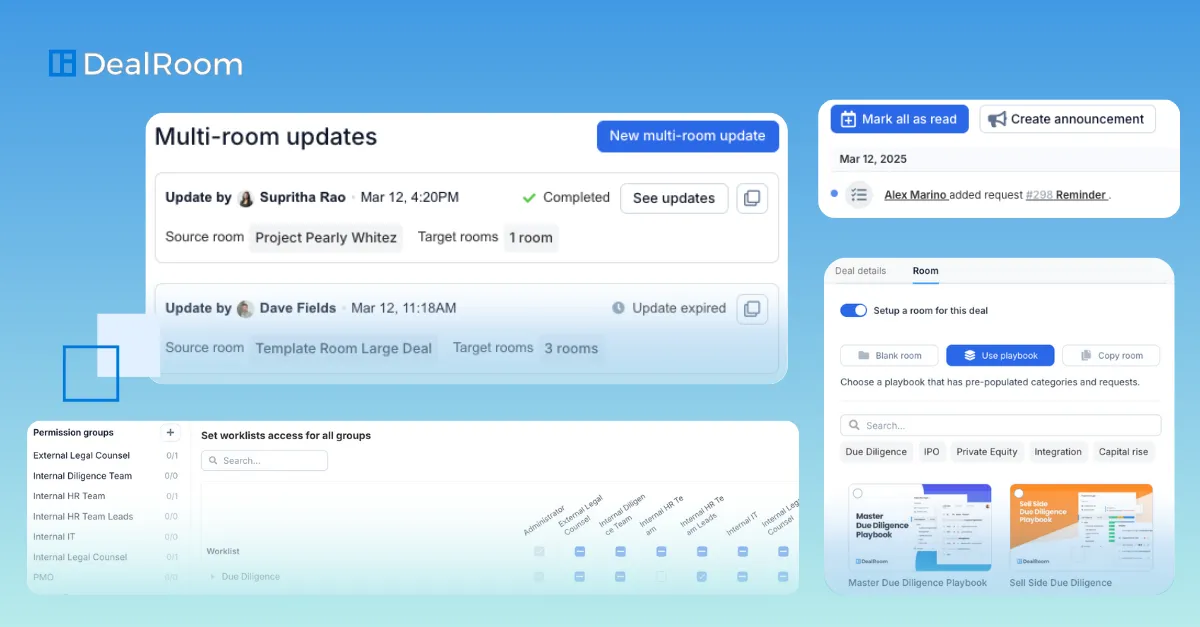Key Takeaways
- Growth equity provides expansion capital to established companies while maintaining existing management, whereas private equity typically involves complete company acquisitions and operational overhauls.
- Private equity commonly employs higher debt levels (leverage) in acquisitions compared to growth equity investments, which usually involve minimal debt.
- Investment horizons, return expectations, and exit strategies differ substantially between these two approaches, with growth equity focusing on growth acceleration rather than financial restructuring.
When investors look at putting money into companies, they often hear about private equity (PE) and growth equity. These two investment types share similarities but serve different purposes in the business world.
Growth equity focuses on providing capital to established companies with proven business models that need funding to expand. On the other hand, private equity typically involves acquiring mature companies with the goal of restructuring and improving their operations to increase value.
The difference matters because it affects the companies receiving investment. Growth capital investments usually involve minority stakes in companies with strong growth potential but limited debt capacity. In contrast, private equity firms typically take majority control through leveraged buyouts (LBOs), often using significant debt to finance the acquisition.
Both investment types sit on a spectrum between venture capital deals and traditional buyouts. While venture capital targets early-stage companies with unproven models, growth equity and private equity focus on more established businesses.
In this guide, we explore how the risk profiles, expected returns, and management approaches differ between these investment strategies.
In this article:
What is Private Equity?
Private equity is an investment strategy where firms raise capital from institutional investors and high-net-worth individuals to acquire stakes in private companies or take public companies private.
The primary goal is to improve operations, drive growth, or restructure businesses before selling them for a profit. These investments typically have a medium to long-term horizon.
Key characteristics of private equity include:
- Targets companies not traded on public exchanges.
- Holds investments for 5-10 years.
- Acquires majority ownership in most deals
- Exits through strategic sales, secondary buyouts, or IPOs
Private equity firms often use leveraged buyouts (LBOs) to finance acquisitions. This involves using significant debt alongside equity to purchase companies.
The private equity deal process typically includes thorough due diligence, strategic operational improvements, and active management of portfolio companies.
Several types of private equity investment strategies exist:
Private equity differs from investment banking in its longer-term approach and direct ownership of businesses, whereas investment banking focuses more on advisory services and capital raising.
What is Growth Equity?
Growth equity is a specific type of private equity investment that sits between venture capital and traditional buyouts on the investment spectrum. It focuses on established companies with proven business models that need capital to accelerate their expansion.
Unlike venture capital that targets early-stage startups or traditional private equity that often acquires mature businesses, growth equity investors seek companies already showing strong revenue growth and profitability (or a clear path to it).
These investments typically provide capital to businesses looking to scale operations, expand into new markets, or develop new products without giving up control of the company. The funding isn't used for turnarounds or debt reduction.
Growth equity has several distinctive characteristics:
- Targets companies beyond the startup phase but before an Initial Public Offering (IPO).
- Focuses on businesses with 15-50% annual growth rates.
- Usually involves minority or significant minority stakes.
- Typically focuses on companies that have proven products and customer bases.
- Has a lower risk profile than venture capital investments.
The capital provided helps companies fuel their business growth through various strategies including market expansion, talent acquisition, and sometimes strategic acquisitions.
For the investor, growth equity offers an attractive middle ground. It's less risky than early-stage venture investments but with higher potential returns than traditional buyouts. This balance makes it particularly appealing in today's investment landscape.
Growth Equity vs. Private Equity: Key Differences

Growth equity is a specific type of private equity investment, but they differ in several key ways. Understanding these differences helps investors choose the right strategy for their goals.
Investment Stage
Growth Equity
Growth equity focuses on relatively mature companies that have already demonstrated steady revenue generation. These companies are typically past the startup phase and are looking to expand further.
Investment is made in the growth phase of a business where the company is looking to scale operations, enter new markets, or develop new products.
Private Equity
Private equity involves investing in a broader range of companies, including those that may be underperforming and require restructuring or those that are established and mature.
Investments can be made at any stage, but they often involve established companies requiring strategic management changes or financial restructuring.
Investment Goals
Growth Equity
The primary goal of growth equity is to provide capital to businesses to help them grow in a non-disruptive way. Investors are interested in fueling expansion to maximize the business’s potential.
Typically, growth equity investors do not seek a controlling interest in companies, allowing the existing management to maintain operational control.
Private Equity
Private equity aims to achieve substantial returns by enhancing the company’s operational efficiency, strategic positioning, and profitability. This could involve significant restructuring or changes in management.
Private equity investors often seek a significant control over or complete ownership of the company to implement strategic changes and realize a turnaround in performance.
Risk and Return
Growth Equity
Growth equity generally involves less risk compared to traditional private equity due to investment in companies that have established market presence and predictable revenue streams.
Expected returns are often scaled over a period of time as company growth naturally progresses.
Private Equity
Risk can be higher in private equity investments due to investment in distressed or underperforming companies where outcomes are heavily dependent on strategic restructuring.
However, the returns are potentially higher due to aggressive value creation strategies, though they come with greater risk exposure.
Exit Strategies
Growth Equity
Exits typically occur through IPOs or sales to strategic buyers. The timing of the exit often coincides with achieving significant business growth milestones.
Private Equity
Private equity firms often exit investments through various channels including IPOs, selling the company to another private equity firm, or to a strategic acquirer after achieving turnaround and growth goals.
Investment Horizon
Growth Equity
Investments are usually mid-term, reflecting the time necessary for the company to achieve its growth objectives.
Private Equity
Investments can vary widely; typically, the horizon is longer-term to allow time for restructuring and achieving significant turnaround results.
While both growth equity and private equity focus on investing in private companies, they diverge in terms of investment stage, risk tolerance, operational involvement, and overall strategic objectives. Understanding these differences can help investors and firms better align their financial goals and strategic initiatives.
The table below sums up the key differences between growth equity and private equity.
Growth Equity vs. Private Equity Investments: Key Considerations

When deciding between growth equity and private equity investments, several factors should guide your decision. Each option serves different investor needs and goals.
Risk and Return Profile
Growth equity typically offers a lower risk profile with moderate returns. These investments target established companies with proven business models and positive cash flow.
On the other hand, private equity often involves higher risk with potentially greater returns. PE investors may acquire struggling companies, implement significant operational changes, or use substantial leverage.
Investment Time Horizon
Growth equity investments generally have shorter holding periods, usually 3-5 years. This makes them suitable for investors seeking medium-term capital deployment.
Private equity investments require longer commitments, typically 5-10 years. Investors must be comfortable with this extended illiquidity period.
Level of Control
Growth equity involves minority stake investments with limited operational control. This approach is ideal for passive investors who prefer to let existing management continue leading.
Meanwhile, private equity typically involves majority ownership positions. This gives investors significant control over company operations, management, and strategic direction.
Market Sensitivity
Growth capital performs best in expanding markets and bullish economic conditions. These investments rely on continued industry and company growth.
Private equity can thrive across various market conditions. During downturns, PE firms often find opportunities to acquire undervalued assets at attractive prices.
Due Diligence Requirements
Due diligence is critical regardless of your investment strategy. Growth equity investors typically invest in later-stage companies with proven business models, seeking minority stakes to fuel expansion without taking control. In growth equity, due diligence is more forward-looking and growth-oriented, with fewer requirements related to integration or cost-cutting.
Private equity investors usually acquire controlling stakes in more mature companies, often with the intention of restructuring or optimizing operations. PE due diligence is more control-driven and risk-mitigation-focused, with deeper scrutiny across all functions.
The table below compares the key focus areas in growth equity due diligence vs. private equity due diligence requirements.
Frequently Asked Questions

What industries do growth equity and private equity firms focus on?
Growth equity firms typically target high-growth sectors like technology, healthcare, and consumer services. These investors seek companies with proven business models that need capital to accelerate expansion rather than develop initial products.
Private equity firms have historically focused on more established industries such as manufacturing, retail, and business services where operational improvements can create value. However, many buyout funds now invest across diverse sectors, adapting their strategies to market opportunities.
Both investment types show interest in software and tech-enabled businesses due to their scalability. Healthcare consistently attracts both growth and development capital due to demographic trends and innovation potential.
Financial services, education technology, and clean energy have emerged as growing focus areas in recent years, especially for growth investors seeking disruptive business models.
How do growth equity and private equity firms add value to their portfolio companies?
Private equity and growth equity firms don't just provide capital—they actively enhance their portfolio companies through multiple strategies. Each type brings unique value-adding approaches based on their investment focus.
Private equity value-added strategies include:
- Operational improvements and cost-cutting measures
- Strategic repositioning of the business
- Monitoring and advisory services to strengthen management
- Financial engineering to optimize capital structure
- Industry consolidation through bolt-on acquisitions
PE firms typically take controlling stakes in mature companies. They often replace management teams and implement significant operational changes to boost efficiency and profitability.
Growth equity value-added strategies include:
- Providing expertise for market expansion
- Building robust sales and marketing infrastructure
- Enhancing product development capabilities
- Investing in growth initiatives rather than focusing on cost-cutting
- Leveraging industry connections to secure partnerships
Growth equity investors usually take minority positions in growing companies. They work alongside existing management to accelerate expansion rather than implement major restructuring.
Both investment types offer significant reputational benefits to their portfolio companies. Their endorsement often attracts additional investors, customers, and talent.
How do growth equity and private equity firms exit their investments?
PE firms and growth equity investors have several ways to exit their investments and realize returns. These exit strategies are crucial as they strongly influence a firm's ability to attract investors and raise funds.
Common exit strategies include:
- Trade Sale (Strategic Acquisition) - Selling the portfolio company to a larger corporation in the same or complementary industry
- IPO - Taking the company public by listing its shares on a stock exchange
- Secondary Buyout - Selling to another private equity firm
- Recapitalization - Restructuring the company's debt and equity mix
- Management Buyout - Selling to the existing management team
Trade sales are the most common exit route in private equity, often with longer holding periods than IPOs. The choice of exit strategy depends on market conditions, company performance, and investor objectives. PE firms typically aim for exits that maximize returns for their limited partners.
Growth equity investors, who focus on expanding established businesses, may prefer different exit timelines than traditional buyout firms. They often base exit multiples on comparable companies in the market.
Both PE and growth equity firms are active investors with board access, allowing them to strategically position their portfolio companies for optimal exits.
How do growth equity and private equity firms source deals?
Both growth equity and private equity firms use specific strategies to find promising investment opportunities. The methods may overlap, but each has unique approaches based on their investment goals.
Private equity firms often source deals through:
- Corporate divestitures from large companies selling off divisions
- Relationships with investment banks that bring deals to them
- Professional networks including lawyers, accountants, and consultants
- Direct outreach to companies they've identified as potential targets
- Proprietary databases that track private companies
These firms typically focus on mature companies and may participate in competitive auction processes for larger deals.
Growth equity firms typically find opportunities through:
- Venture capital networks looking for portfolio companies ready for later-stage funding
- Industry conferences and events where growing companies present
- Relationships with entrepreneurs and early investors
- Targeted research in fast-growing sectors
- Social media and digital presence monitoring
Growth equity investors often seek companies that haven't previously raised institutional capital but show strong growth potential.
What are the typical fund sizes for growth equity vs. private equity?
Private equity funds typically maintain larger fund sizes compared to growth equity funds. These buyout-focused funds often range from $1 billion to $20+ billion for established firms. The largest private equity funds can exceed $25 billion in capital commitments.
Growth equity funds generally operate with smaller fund sizes, typically ranging from $300 million to $3 billion. These funds target companies that have moved beyond the venture stage but aren't yet candidates for traditional buyouts.
Fund size correlates with investment strategy. Buyout funds with larger pools of capital can acquire established companies entirely, while growth equity investors take minority positions requiring less capital per transaction.
Fund sizes have trended upward over time across both categories. Today's growth equity funds are often comparable in size to what would have been considered mid-sized buyout funds a decade ago.
How do growth equity and private equity firms approach valuation?
Private equity and growth equity firms use different valuation methods based on their investment targets and goals. These approaches reflect the unique characteristics of each investment strategy.
Private equity investors typically value companies at 4-8x EBITDA, depending on the industry. They analyze historical performance and look for companies with predictable cash flows.
Growth equity firms often pay higher multiples (10-15x revenue) for companies showing rapid expansion. They value growth potential more than current profitability.
Many firms combine multiple valuation methods to establish a range rather than a single value point. This approach helps validate assumptions and account for various growth scenarios.
How do growth equity and private equity firms handle economic downturns?
During economic downturns, private equity and growth equity firms adopt different strategies to protect their investments and find new opportunities. These strategies often reflect their underlying investment approaches and risk profiles.
Private equity firms typically focus on strengthening their existing portfolio companies during recessions. They may implement cost-cutting measures, improve operational efficiency, and restructure debt to maintain stability.
PE firms also tap into their significant experience with financial distress situations. Their expertise in managing leverage becomes particularly valuable when markets turn sour.
Many private equity investors view downturns as buying opportunities. With lower valuations across markets, they can acquire quality assets at discounted prices and position for strong returns when markets recover.
Growth equity firms take a somewhat different approach. They typically prioritize companies with strong fundamentals and sustainable business models that can weather economic storms.
During recessions, growth equity investors often:
- Extend runway for portfolio companies by managing cash burn
- Focus on core business offerings rather than experimental initiatives
- Help portfolio companies identify new revenue opportunities
- Maintain sufficient dry powder (uninvested capital) for follow-on investments
Final Thoughts
Both growth equity and private equity play critical roles in shaping the future of private companies, yet they do so with distinct strategies, risk profiles, and levels of involvement. Whether your firm is focused on scaling high-growth companies or turning around mature businesses, success hinges on the ability to manage complex deal workflows, collaborate efficiently, and make informed, data-driven decisions.
That’s where DealRoom comes in.
Designed specifically for modern investment teams, DealRoom’s M&A Platform streamlines the entire M&A lifecycle—from sourcing and diligence to post-investment value creation. For growth equity firms, DealRoom offers the tools to evaluate fast-moving opportunities, collaborate with founders and stakeholders, and track growth metrics with precision. For private equity firms, the platform supports deeper due diligence, operational planning, and integration management—all within a single, secure environment.
By combining powerful analytics, customizable workflows, and seamless communication tools, DealRoom enables both growth equity and private equity investors to act faster, reduce friction, and maximize returns. Request a DealRoom demo today to learn more.



.webp)















.png)
.webp)



.webp)
.webp)
.webp)





.png)
.png)
.png)
.svg)

.svg)
.png)
